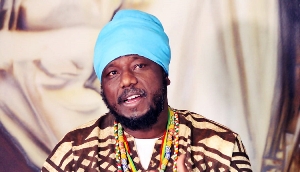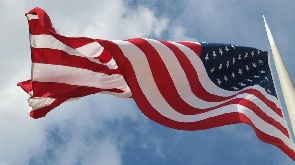..Half Assini to Ankobra, fishermen out of job
By: Napo Ali Fusseini and Korku Devitor
The incidence of algal bloom in Ghana’s territorial waters along the western coast has been linked to activities of factories in neighbouring Cote D’Ivoire.
In the last six months fishermen in the Jomoro, Ellembele, and parts of Nzema East Districts have been battling the greenish substance which is not only threatening thei livelihoods, but also destroying the tourism industry in the region noted for some of the most beautiful beaches in Ghana.
Algal bloom is the rapid increase or accumulation in the population of algae in an aquatic system. The substance has harmful effect on the environment.
Following the outbreak of the greenish substance in Ghana’s territorial waters, the National Disaster Management Organisation declared the stuation a national disaster with government forming a task force to investigate the cause and make recommendations as to how the problem must be dealt with.
Fishermen within a pace stretching some 70 kilometres from New Town near Half Assini, Mangyean Affasu, Half Assini, Ekpu, Atwebansu, Ahobre and Egbazo are under stress day and night as their nets are being torn by the algae.
Other fishermen from Bonyere, Agyeaza, Ezinlibo Alengezuley Beyin, Atuabo, Esiama Kikam, Asenta and Ankobra have all expressed serious worry about the situation.
A tour of the affected areas by The Lead revealed that the colour of the ocean along that stretch had turned green when this reporter visited with the waste being washed ashore at every splash of the ocean, while the brownish sea-shore sand had turned green.
Workers of the Eco-Brigade under Zoil Ghana Ltd, who were tasked initially to fight the algae sa said they were overwhelmed by the situation and there was very little they could do under the circumstances, and have since abandoned attempts to clean up the mess.
Justice K Ackerson, district supervisor for Zoil in Ellembele, told this paper they suspected the problem emanated from La Cote D’Ivoire where it was believed some of their factories discharged waste into the sea.
“Fishermen who used to drag their nets ashore here now have to pick their catch deep in the ocean because they risk destroying their nets in the waste,” Ackerson said.
According to him, after attempting for some time without success, his outfit had abandoned any idea of dealing with the situation.
45 year old Ebenezer Kwofie, father of three and a practicing canoe fisherman in Ellembele said he had stopped going to sea as a result of the situation and so found it difficult to take care of his family.
Chief fisherman at Esiama, Nana Kofi Bekoe told this paper on by telephone that, “it is a big hindrance to our work and we are at a loss as to how the situation could be dealt with.”
According to him, the phenomenon usually entered the country’s waters from the Ivorian end, and fishermen sighted it on the high seas. He said the algae usually caused their outboard motors to break down on the sea since the plants chocked the water outlet making the machines go off.
Nana Bekoe described the situation as a ding-dong affair with the algae going away for some time and then return stronger than before.
He appealed to government of Ghana to do something about their plight because it had affected the livelihoods of about 10,000 fishermen.
“Those of you who speak to government should ask the authorities to find a lasting solution to this menace for us before it throws all of us out of job,” he urged almost shedding tears.
Director of fisheries at the Ghana Fisheries Commission, Samuel Qaurtey, recently complained about the incidence of algae bloom stifling Ghana’s fishermen out of business in the country’s western coastal districts.
“Algae Bloom is affecting fishing. The weeds are entangling with fishermen’s nets and destroying them. This is forcing fishermen to go further out seaward – up to 15 nautical miles – to fish,” he hinted.
The official position of the committee set up by government to investigate the cause of the situation was that further work needed to be done with the Ivorian authorities being contacted to adopt a two-country approach to tackling the problem.
Michael Kwakye, a senior programmes officer at Environmental Protection Agency (EPA) Ghana who was also part of the committee that investigated the issue said algae on its own was difficult to control.
“But this situation is so threatening because there seems to be a nutrition source for it, and that is likely to be coming from Cote D’Ivoire,” he stated.
According to him the Ivorian-source theory was strengthened by the fact that the situation was more serious, close to the Ghana-Cote d’Ivoire boundary, but diminished while one came deeper into Ghana, ending around the Ankobrah River, about 270 kilometres west of the capital.
“The algae also emits nitrogen, sulfur and even methane gases with serious environmental consequences,” he said, adding that since it also appears at the peak of the fishing season, the poverty situation it brings about along the coast is also serious.He said the committee had recommended to government to dialogue with their Ivorian counterparts at diplomatic levels for a thorough investigation to be launched into the phenomenon to find lasting solutions to it.
Source: The Lead
General News of Tuesday, 12 October 2010
Source: The Lead












